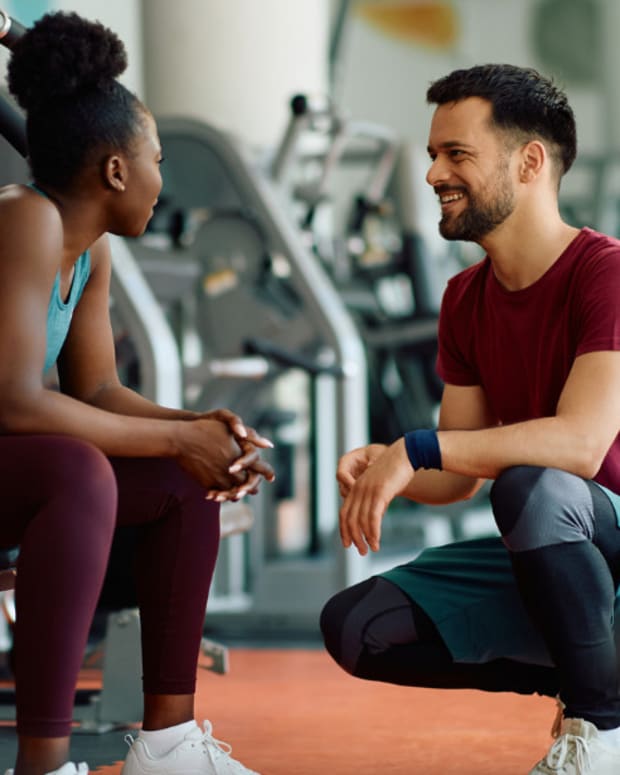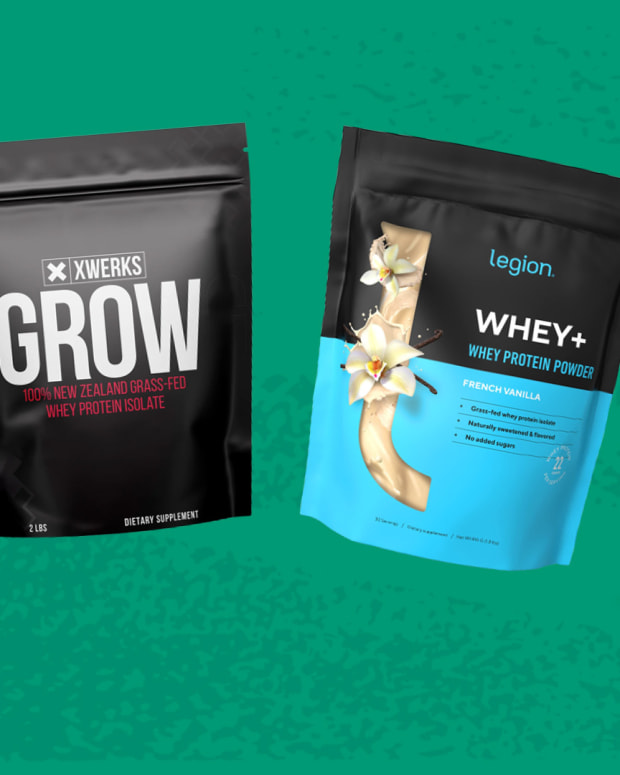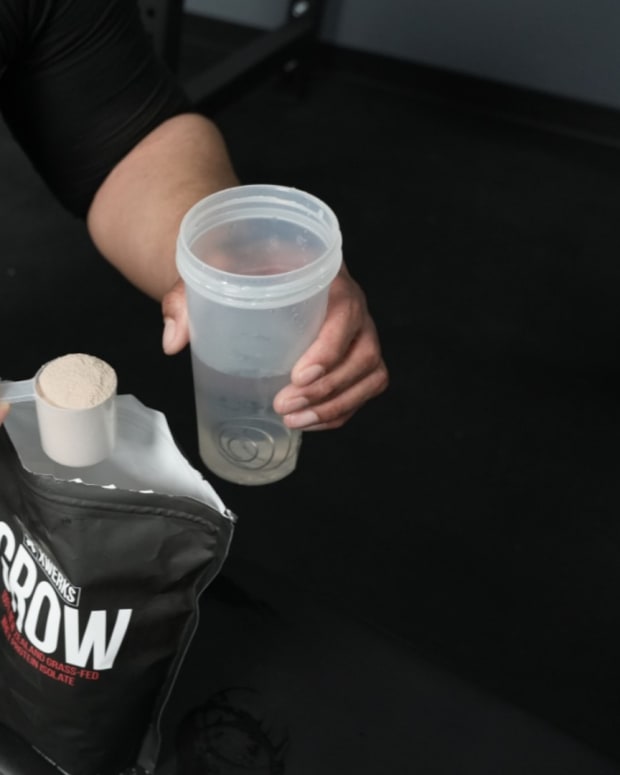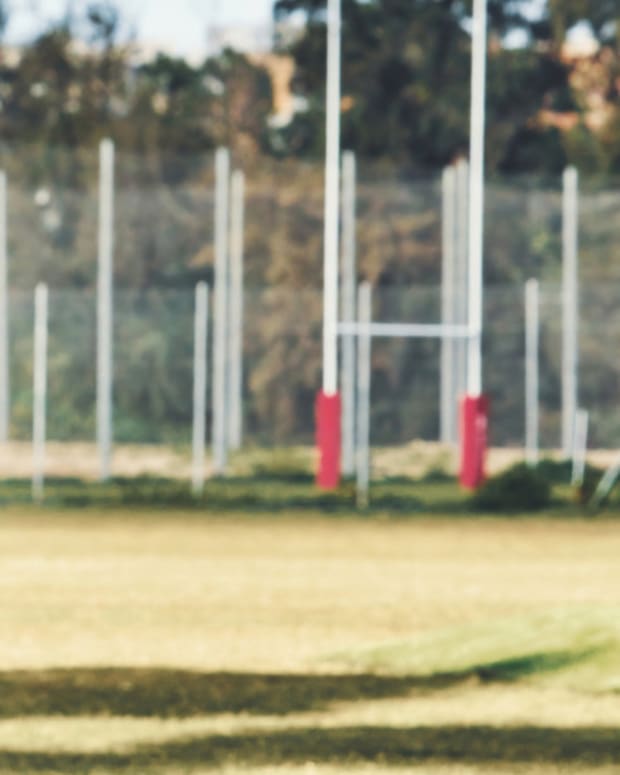The products featured in this article have been independently reviewed. When you buy something through the retail links on this page, we may earn commission at no cost to you, the reader. Sports Illustrated editorial staff are not involved in the creation of this content. Learn more here.
A comfy, sturdy pair of hiking sandals can make all the difference when you’re navigating uneven terrain, slippery slopes and river crossings. A big adventure calls for quality adventure sandals that can help you keep your footing while getting you to your final destination (minus the blisters, sprained ankles and overall sore feet that hiking in flip-flops can cause). Whether you’re trail running or backcountry hiking, a long day on your feet means that you’ll need a grippy pair of sandals with features like arch support, breathability, quick-drying webbing and great traction. Sandals for hikers should also have clean, functional designs that support agility and speed.
Before embarking on your next outdoor adventure, consider investing in a quality pair of hiking sandals that offer versatility, functionality and protection. Our best hiking sandals guide will cover our favorite footwear for different needs, such as arch support or durability, what to look for in a long-lasting and comfortable pair of hiking sandals, and how to choose the right footwear for the outdoor activities you love the most, whether that’s camping, climbing or paddle boarding.
Our Picks for the Best Hiking Sandals:
- Best Overall Hiking Sandal: Nike Oneonta
- Best Hiking Sandals for Women: Hoka Hopara Women’s
- Best Hiking Sandals for Men: Nike Vista
- Best Water Sandals for Hiking: Salomon Amphib Bold 2
- Best Hiking Sandal with Arch Support: Skechers GOwalk Flex – Sublime
- Best Durable Hiking Sandal: Hoka Hopara All Gender
- Best Minimalist Hiking Sandals: Skechers Reggae
Best Overall Hiking Sandal: Nike Oneonta
Key Features:
- Price: $65 to $70
- Weight per pair: 1.41 pounds
- Type of closure: Compression straps
- Best for: Rugged terrain
Nike is a footwear powerhouse, so it should come as no surprise that our best overall hiking sandal hails from the Nike brand. The Nike Oneonta are a versatile pair of hiking sandals that come in six color schemes. They’re designed with an ultra-thick heel strap to keep your feet secure on trails, through rivers and stepping over trees, even if you’re carrying the additional weight of a hiking backpack. Named after the Oneonta Gorge in Oregon, these slip-on hiking sandals are built to withstand the toughest of terrains, and include a plush webbing system and elastic cord and cinch on the heel to help hikers create a personalized, secure fit. They’re also made with a contoured footbed layered on top of durable foam to keep you comfortable on all types of trails.
On the outsole, you’ll find small, strategically-placed lugs that can grip a variety of surfaces, so while our best sandals for hiking are an excellent choice for the rugged terrain (especially when paired with a good trekking pole), they can also be used for street walking, water sports, rafting and more.
Pros:
- Adjustable straps and heel toggle
- Six terrain-inspired color schemes
- Lugs on outsole increase traction
- Plush webbing provides midfoot comfort
Cons:
- Difficult to put on and take off
- Straps may be too short for wider feet
Best Hiking Sandals for Women: Hoka Hopara Women’s
Key Features:
- Price: $135
- Weight per pair: 10.10 ounces
- Type of closure: Bungee laces
- Best for: Day hikes
Our best hiking sandals for women are none other than Hoka Hopara, a crowd-favorite for women in the hiking community. These ultralight hiking sandals weigh just over 10 ounces and work great for day hikes that demand being on your feet for hours as a time. You can also use these sandals for kayaking or rafting since their water-friendly design includes a synthetic upper with cutouts that allow water drainage (making soggy sandals a thing of the past). Plus, the grooving on the outsole helps these sandals grip surfaces when wet. Still, given their weight, women looking for more heavy-duty footwear may want to try hiking boots instead.
With a comfort-first design, Hoka Hopara includes a neoprene collar that reduces friction, a rubberized EVA midsole (with a similar plush feel to foam) and a rubberized toe cap that offers an additional layer of protection for your feet. The outsole also includes multidirectional lugs that generate traction, making the Hopara sandals a versatile choice for terrains both uneven and smooth. The sticky rubber sole promotes grip in wet and dry conditions as well. While some hiking sandals are a pain to put on (literally), the bungee laces let you easily wear and adjust your sandals to your desired comfort level without having to mess around with buckles.
Pros:
- Upper includes cutouts for water drainage
- Sticky rubber sole offers grip in all conditions
- Easy-to-adjust bungee laces
- Fits both narrow and wide feet
Cons:
- Bulkier design and larger shoe
- Neoprene may make your feet hot
Best Hiking Sandals for Men: Nike Vista
Key Features:
- Price: $55 to $60
- Weight per pair: Not available
- Type of closure: Velcro straps
- Best for: Camping
Nike wins another spot on our list with the sleek and lightweight Nike Vista, which are our pick for the best hiking sandals for men. These airy sandals come with a removable velcro strap system that lets you customize your look with any color scheme you want. Outside of this fun personalization feature, these hiking sandals include responsive cushioning and a contoured footbed that helps your feet stay comfortable, while giving you enough support for lift-offs if you plan to run. A heel pull tab keeps your heel securely in place (and allows you to easily take these hiking sandals on and off), and the grippy outsole also lets you safely walk and run through varying conditions.
As a more casual pair of hiking sandals, Nike Vista are best for easy or lighter hikes through forests or as camp shoes for traditional outdoor activities. Molding in the toe and heel areas help keep your feet stable, so you don’t have to worry about sweat or heat causing your feet to slide around in your sandals. Still, customers say these shoes run small, so you may want to size up if you plan to use them for day hikes or during hot summer months where your feet may swell.
Related Post: The Best Hiking Shoes for Men
Pros:
- Removable and customizable strap system
- Contoured footbed helps with lift-offs
- Heel pull tab makes sandals easy to put on
- Molding in toe and heel area prevents sliding
Cons:
- Runs on the smaller side
- May not be the best for steep terrain
Best Water Sandals for Hiking: Salomon Amphib Bold 2
Key Features:
- Price: $100
- Weight per pair: 7.4 ounces
- Type of closure: Bungee laces
- Best for: River crossings
If you're looking for shoes that are rugged enough to protect your foot but can still shed water quickly, the Salomon Amphib Bold 2s are an excellent option. While these stretch the definition of what a sandal actually is—they're listed on Salomon's website as a sandal, but look far more like an actual hiking shoe—they have several features that make them especially well-suited to hikes where you'll be in and out of water.
Light enough for swimming at just 7.4 ounces, these breathable and quick-drying hiking "sandals" can help you cross rivers, run through streams and even hike in rainy conditions. You can also collapse the heel to wear these shoes as a slide if you want to use them for more casual walking or everyday activities. Plus, they’re made with EVA foam that reduces impact and shock, and can easily support long days.
Designed for relaxing hikes and water movements, Salomon Amphib Bold 2 includes stitch-free upper construction that keeps these puppies tight on your feet (like traditional water shoes), which is exactly what you’ll want for water activities since footwear that slides around can be dangerous while swimming or walking through water. The tongue is also connected to the upper on both sides to prevent debris and small rocks from entering the sandal. Perforated grooves on the outsole, meanwhile, increase friction that helps you navigate both wet and flat rock surfaces.
Pros:
- Collapsible heel lets you wear these sandals as regular shoes
- Gusseted tongue keeps debris and rocks out of sandals
- Stitch-free construction creates tight and secure fit
- Perforated grooves allow for walking on rocky surfaces
Cons:
- Difficult to clean
- Not designed for very rugged hikes
Best Hiking Sandal with Arch Support: Skechers GOwalk Flex – Sublime
Key Features:
- Price: $60
- Weight per pair: 6 ounces
- Type of closure: Hook-and-loop closure
- Best for: Everyday wear
If you are looking for the ultimate leisure comfort sandal, look no further than the Skechers GOwalk Flex – Sublime hiking sandals, a comfortable river style sandal perfect for everyday wear. Contoured Goga Mat technology in the footbed means that these shoes mold to your feet, so expect reduced shock and impact with every step for a great walking experience.
If you’re vegan or environmentally conscious, you'll be glad to know that Skechers GOwalk Flex – Sublime hiking sandals are made with 100 percent vegan materials. Best for casual wear and outdoor walks, these hiking sandals include an adjustable ankle strap and a textile upper that helps your feet stay secure and cool on hot-weather hikes.
Pros:
- Machine washable
- Made with 100 percent vegan materials
- Shock-absorbing midsole
Cons:
- Only comes in whole sizes
- Some customers have issues with sizing
Best Durable Hiking Sandal: Hoka Hopara All Gender
Key Features:
- Price: $135
- Weight per pair: 12 ounces
- Type of closure: Bungee laces
- Best for: Steep climbs
Similar to the Hoka Hopara hiking sandals for women, the Hoka Hopara All Gender hiking sandals have the same general build and structure, but can fit both men and women. As our best durable hiking sandal, this footwear is an excellent choice for hikes with steep climbs or hikes that traverse uneven terrain. These sandals include cutouts in the upper that allow for water drainage, so you can safely head into water or hike on rainy days. A quick-lace system lets you easily tighten or loosen these hiking sandals, and the insole is made with responsive cushioning that supports agile movements. Hoka Hopara All Gender hiking sandals also have neutral stability that gives just enough support without taking away from your flexibility.
On the outsole, large multidirectional lugs help you grip uneven surfaces like rocks or logs, while broad grooving lets you maintain your grip on wet or slick surfaces. As an all-gender shoe, be sure to carefully review the size chart to make sure you’re buying the correct sized shoe.
Pros:
- Sticky rubber outsole boosts traction
- Rubberized toe cap keeps debris out
- Responsive cushioning supports running
- Comfortable for wide feet
Cons:
- May be hot in summer months
- Expensive price tag
Best Minimalist Hiking Sandal: Skechers Reggae
Key Features:
- Price: $55
- Weight per pair: Two pounds
- Type of closure: Buckle straps
- Best for: Easy hikes
For durable hiking sandals with a minimal design, Skechers Reggae fits the bill with their Trail On By footwear. These simple hiking sandals have a strappy design with buckle straps and a slingback heel, which allows for maximum comfort and breathability for your feet. Best for hot days and warmer climates, these hiking sandals are a great choice for easy hikes where your feet don’t need too much protection, but just enough to provide stability and support. Skechers Reggae are water-friendly and made with a lightweight shock-absorbing midsole that reduces impact on your feet, in addition to a contoured cushion footbed that creates a cloud-like step.
Made with 100 percent vegan materials and machine washable, these hiking sandals are easy to care for and keep clean, and don’t use any animal sources or materials in their construction. They currently come in two color options of black and white or multicolor, and have a medium width that can support narrow-to-average width feet. Those with wider feet may find that these hiking sandals run too small, since there’s little give and stretch in the fabric in the upper.
Pros:
- Breathable and minimal design
- Slingback heel for maximum comfort
- Quick-release closure for easy take off
- Water-friendly
Cons:
- Fabric isn’t very stretchy
- May not be suitable for rugged terrain
How to Choose the Best Hiking Sandals For You
Looking for maximum grip? Waterproof footwear? How about sandals that can be worn with socks on chilly days? Before buying a pair of hiking sandals, be sure to consider all of your needs (even the minor ones) to guarantee that the footwear you invest in will support your feet, preferences and favorite outdoor adventures. Here’s how to choose the perfect hiking sandals.
Price
A durable pair of hiking sandals will cost anywhere from $40 to $200, give or take. Anything less than that, and you run the risk of buying footwear that won’t last very long or won’t be made out of quality materials. If your budget allows, investing in any of the higher-quality footwear found on our list won’t just get you a better pair of hiking sandals, but may reduce how often you need to replace your sandals. While buying a less-expensive pair of hiking sandals could save you money now, you could end up paying even more in the long-run if your shoes quickly fall apart.
Traction
You’ve probably heard the word “traction” used a lot on our best hiking sandals guide, and for good reason. Traction refers to how your footwear grips surfaces below you and how much resistance it offers during pivoting movements. Greater traction equals greater grip and less rotation, while less traction leads to more slipping. With outdoor adventures in particular like hiking and climbing, you’ll want to seek out hiking sandals with higher levels of traction to keep you safe on uneven or slippery surfaces, or during inclement weather like snow, ice or rain.
Support
Comfort should always trump fashion when it comes to hiking sandals and any hiking shoes and running shoes in general. Outdoor activities can be intense, aggressive and hard on your body, so the last thing you want is a pair of hiking sandals with little-to-no-support (despite how good they look). Look for cushioned hiking sandals made with foam and/or rubber, or hiking sandals with varying levels of cushioning that give you support where you need it most (such as more cushioning on your arch and less around your midsole). Hiking sandals with arch support can also reduce impact on your feet and distribute pressure while taking stress off of your Achilles.
Toe protection
You’ll have two choices when it comes to hiking sandals: open-toe or closed-toe shoes. Each type of hiking sandal comes with benefits and drawbacks. While open-toe sandals offer more breathability (and are the closest you’ll get to walking barefoot), closed-toe sandals are a much better choice for water activities and being outdoors in cold or inclement weather. Keep an eye on toe straps as well, which can prevent you from wearing hiking socks with open-toe shoes (this may not be the most fashionable, but can help you stay warm on colder hikes or at night). Some people may also find sandals with toe loops or thong-style sandals to be more comfortable.
Closure systems
Like toe protection, there are also two main types of closure systems that most hiking sandals have: buckle or velcro straps, or bungee laces. You’ll get more stability and a tighter fit around your foot with bungee laces, but straps (especially velcro straps) are much easier to adjust. Still, of the two strap designs, buckles are a more secure option, since velcro can lose its stickiness over time. Don’t forget to consider webbing, as well, since the type of webbing a sandal has (if any) can also aid in keeping your feet secure. Webbing material will also impact breathability and dryness; for example, polyester webbing will dry quickly, but might feel hot on your feet.
Foot shape
If you’re like me and you have flatter feet, it’s important to consider your foot shape when picking out a pair of hiking sandals that will ultimately support your needs. I always seek out footwear with enhanced arch support to make up for the arch my feet lack, but different types of feet require different types of designs. People with wider feet, for example, will want to look for a roomy pair of hiking sandals with a longer adjustable strap system that won’t feel restrictive, especially after a long day of standing and heat that can cause your feet to swell. After all, you want to actually fit into your shoes, otherwise you may be plagued with blisters, sore feet and all of the unpleasant things that hiking sandals are meant to alleviate in the first place.
Outdoor activities
While you may have heard that sandals should never be worn on hikes, today’s sandals are much different than the sandals of yesteryear (as our list proves). They’re specifically designed to withstand tough environments and even tougher workouts. If water hikes are your adventure of choice, you’ll want to look for hiking sandals that are closed-toe and have flatter soles to keep your footing secure on slippery surfaces. Trail hikers, on the other hand, will want to prioritize stability and comfort, and some features to seek out are nylon shanks that add structure to your sandals, tight closure systems to keep your feet secure and deeper treads for running on rocks.
How We Chose the Best Hiking Sandals
There are numerous factors we considered to determine which hiking sandals were worthy of a spot on our list. We looked at price, design, durability, materials, closure systems, toe protection and comfort. We also carefully considered customer reviews to see if these hiking sandals held up to their promises (and withstood tough activities) before including them in our guide.
Hiking Sandals FAQs
How long do hiking sandals last?
On average, a good pair of hiking sandals should last anywhere from 500 to 1,000 miles, or three to six months of regular use. This timeline can vary greatly depending on the quality of your footwear and the intensity of your exercises or outdoor activities. Signs that your hiking sandals should be replaced include cracks, loose straps and loss of support in the midsole.
Can you walk all day in hiking sandals?
Few outdoor activities that require hiking sandals are short, so quality pairs of hiking sandals should easily support walking all day (and other types of longer exercises). Still, this will depend on your stamina and fitness level, so be sure to take a break if you’re feeling fatigued.
Are hiking sandals comfortable?
Like all types of hiking footwear, there are comfortable and uncomfortable hiking sandals. Comfortable hiking sandals will typically have features like cushioning, rubber outsoles and foam midsoles. Polypropylene is another comfortable material used to regulate temperature.
Do hiking sandals get slippery when wet?
Most, but not all, hiking sandals are designed to withstand water. Some can be submerged completely and are made specifically for water activities, while others won’t get damaged by rain. Grippy hiking sandals with greater traction shouldn’t get slippery when wet, but any sandals with lower levels of traction might feel somewhat slippery when walking on wet surfaces.
Final Thoughts
Hiking shoes or hiking boots are often first-draft picks for rugged outdoor activities, but hiking sandals offer numerous benefits that their heavier counterparts don’t. Hiking sandals are much more lightweight and breathable, and allow you to venture into water, whereas bulky hiking footwear can cause you to feel hot and weighed down. Hiking sandals also work great on slippery terrain and prove to be an excellent choice for a diverse array of exercises like hiking, climbing and crossing rivers. If you’re considering a new pair of hiking sandals, be sure to consult our list for our top picks.
Prices are accurate and items in stock as of publish time.
















